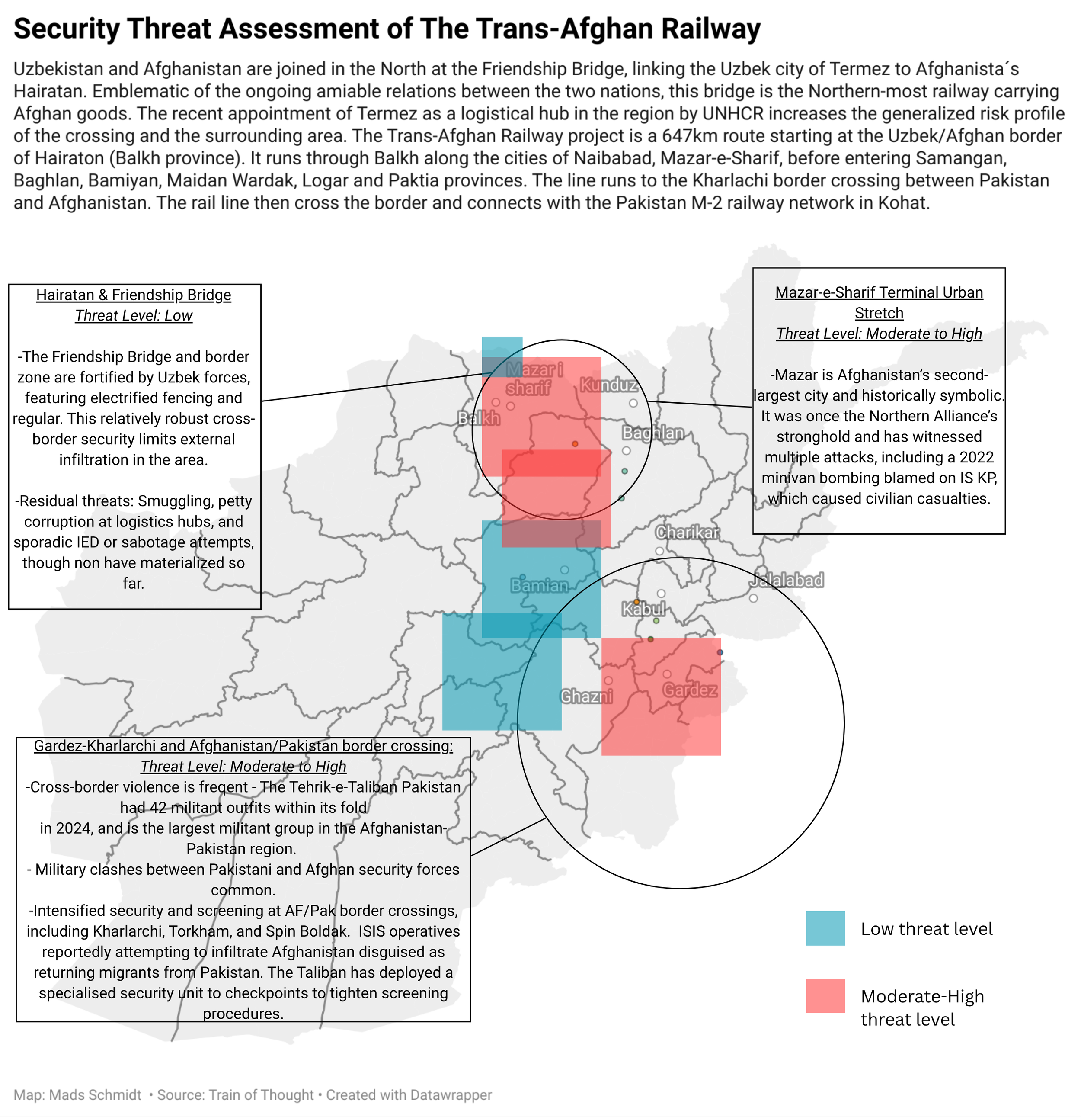Railway Development in Afghanistan
About
I have undertook this extensive project to take a deeper look into the railways - existing and planned- in Afghanistan. Primarily to feed my mad curiosity in the topic and as a way to consolidate my research notes in one place. And if my research, in some small way, also helps others similarly interested, that would be a bonus.
Afghanistan does not have a big railway system - the country has about 214km of laid track. The country has mountainous terrain, a history of conflict and wars, and road is the dominant transport method to move freight and passengers from A to B. Existing short lines include: one crossing from the border of Uzbekistan, two from Turkmenistan, and one short line from Iran.
So I am sure you are all thinking, why then are you doing this? Why does this matter?
Well because since I first started writing about Afghan railway projects in 2022 for an article and having worked and travelled in the region for over a decade, I have noticed a number of railway projects cropping up in different parts of the country. These projects have mostly stalled due to conflict, instability and leadership challenges. And given the history of previous attempts of rail development in Afghanistan that date all the way back to the 1800s - nothing serious has ever come to fruition due to fear and insecurity. But since the COVID-19 pandemic, the Russia-Ukraine conflict in 2022, the Red sea crisis, the Taliban takeover in 2021, the retreat of globalisation, Western sanctions, and a number of other geopolitical shifts, trade corridors and supply chains have gained impetus. Amidst the changing currents, rail lines are slowly being laid in Afghanistan and a new set of winners and losers are emerging.
But despite this, from the many conversations I have been having on this topic, there is very little understood in the Western world as to what is going on, what this means and how to make sense of it. And so far my extensive desktop review identified blindspots that constitute significant gaps in knowledge surrounding railway development in Afghanistan and the wider South and Central Asia and Middle East region. This has led to a great misunderstanding and lack of interest in the railway initiatives going on in this part of the world, which for me, is not good enough.

The Khaf-Herat Railway Route
Route map and breakdown of construction of the Khaf-Herat Railway project between Iran and Afghanistan

The Trans-Afghan Railway: Security Threat Assessment Map
Security threat assessment map of the Trans-Afghan Railway



